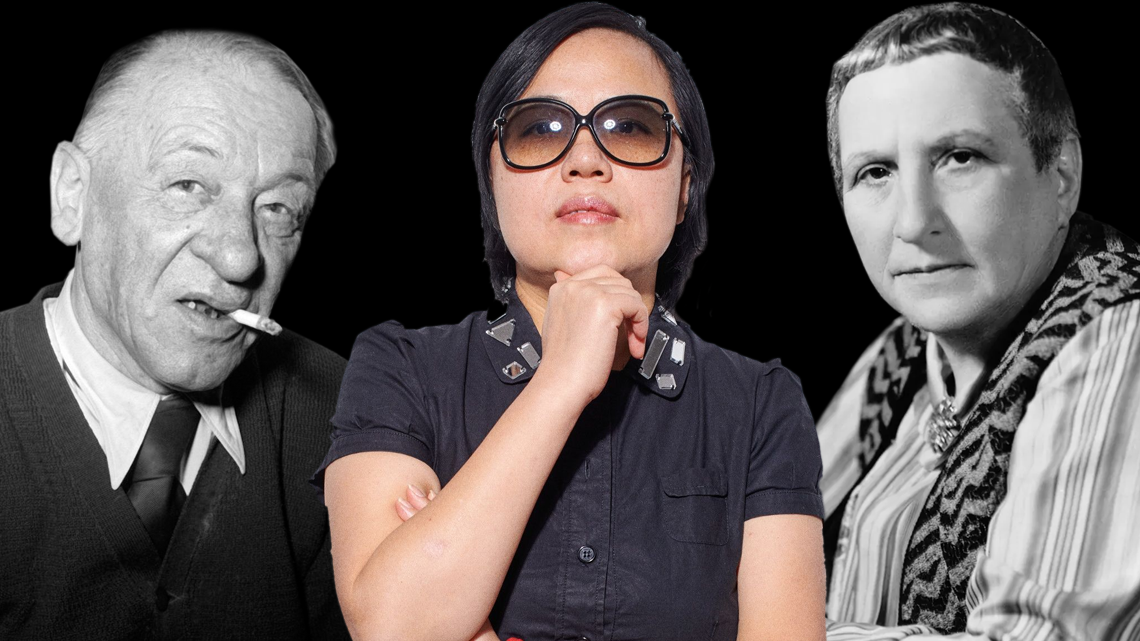
Résumé de la thèse
Illustration © Mariana in the South, par John William Waterhouse
Sous la direction de M. Patrick QUILLIER
Mystique de l’autofiction : la fictionnalisation de la voix. La « Tétralogie » de Blaise Cendrars, L’Autobiographie d’Alice Toklas de Gertrude Stein et Spectacle de la Disparition de Mian Mian : étude acroamatique.
Ce travail se propose de comparer trois des représentants majeurs de l’autofiction moderne et contemporaine, Blaise Cendrars, Gertrude Stein et Mian Mian, que rapproche notamment le trouble référentiel du « je » poétique par la diffraction de la voix auctoriale. Tous trois partent d’une source commune, la célèbre inscription de Gérard de Nerval sous son portrait gravé par Eugène Gervais en 1854 : « Je suis l’autre ». Leur intérêt commun pour le domaine du sonore et de l’ouïe, tant sur le plan de la production que de la réception littéraire, lie ces trois auteurs et poètes. Cet entremêlement de voix réelles et voix fantasmées devient, dans les pas de Nerval puis de bien d’autres, l’affirmation radicale de l’extranéité définitoire du poète ; il est celui que sa propre création, comme une altérité intérieure, tient à l’écart des hommes, surtout si, comme nos trois auteurs, il vit immergé au cœur de leur société. Ce phénomène est souvent associé à la « crise du moi », engendré au lendemain de la seconde guerre mondiale, qui continue encore aujourd’hui d’irriguer les domaines de la littérature et des arts. Cendrars, Stein et Mian entretiennent tous trois un rapport complexe au monde en proie à des évolutions auxquelles ils se sentent étrangers. La littérature apparaît dès lors comme un exutoire via la mise en scène et la fictionnalisation de leur propre entité et de leur monde. Cette approche littéraire confine à une forme de mystique : par l’autofiction, ils s’auto-engendrent, se mythifient, et brisent la digue qui séparait le créateur de sa création. L’étude s’intéresse ainsi à diverses facettes de ces œuvres autofictionnelles et vise à comparer les manifestations plurielles des voix dans un texte fictif narré à la première personne. Ce travail cherche à mettre en lumière leur conception de la fiction, de la mise en scène de soi, en passant par l’expression auctoriale ainsi que par leur recours aux techniques oralisées ; à comprendre ce qui les rapproche, comme leur passion commune pour le mystique, la musique ou le lyrisme ; et ce qui les sépare, comme leur rapport au temps et à l’espace, leur vision d’un monde désenchanté ou à l’inverse enchanteur et autarcique. Par une approche acroamatique qui servira de point d’ancrage à toute analyse de ces œuvres, il convient d’être à l’écoute de ces auteurs pour mieux cerner leur paradoxe commun : leur modernité dans leur volonté d’être anti-moderne et anticonformiste. Partant, c’est par une approche acroamaticienne que parviendra à surgir à nous l’éclatante modernité de ces voix dans le paysage littéraire actuel.
English version
Mystique of autofiction: the fictionalization of the voice. The "Tetralogy" by Blaise Cendrars, The Autobiography of Alice Toklas by Gertrude Stein and Show of the Disappearance by Mian Mian: An acroamatic study.
This work aims to compare three of the major representatives of modern and contemporary autofiction, Blaise Cendrars, Gertrude Stein and Mian Mian, who are linked by the referential disorder of the poetic “I” caused by the diffraction of the authoritative voice. All three start from a common source, the famous inscription of Gérard de Nerval under his portrait engraved by Eugène Gervais in 1854: “I am the other”. Their common interest in the field of sound and hearing, both in terms of production and literary reception, binds these three authors and poets. This intermingling of real voices and fantasized voices becomes, in the footsteps of Nerval and many others, the radical affirmation of the poet’s defining foreignness; he is the one that his own creation, like an inner otherness, keeps away from men, especially if, like our three authors, he lives immersed in the heart of their society. This phenomenon is often associated with the “ego crisis”, engendered in the aftermath of the Second World War, which continues to permeate the fields of literature and the arts to this day. Cendrars, Stein and Mian all have a complex relationship with the world in the grip of changes to which they feel foreign. Literature therefore appears as an outlet through the staging and fictionalization of their own entity and their world. This literary approach borders on a form of mysticism: through autofiction, they self-generate, mythologize themselves, and break the barrier that separated the creator from his creation. The study thus examines various facets of these self-fictional works and aims to compare the plural manifestations of voices in a fictional text narrated in the first person. This work aims to highlight their conception of fiction, of self-staging, through authorial expression as well as their use of oral techniques; to understand what brings them together, such as their common passion for mysticism, music or lyricism; and what separates them, such as their relationship to time and space, their vision of a disenchanted world or, conversely, enchanting and autarchic. Through an acroamatic approach which will serve as an anchor for any analysis of these works, it is advisable to listen to these authors to better understand their common paradox: their modernity in their desire to be anti-modern and anti-conformist. . Therefore, it is through an acroamatician approach that the dazzling modernity of these voices in the current literary landscape will emerge to us.